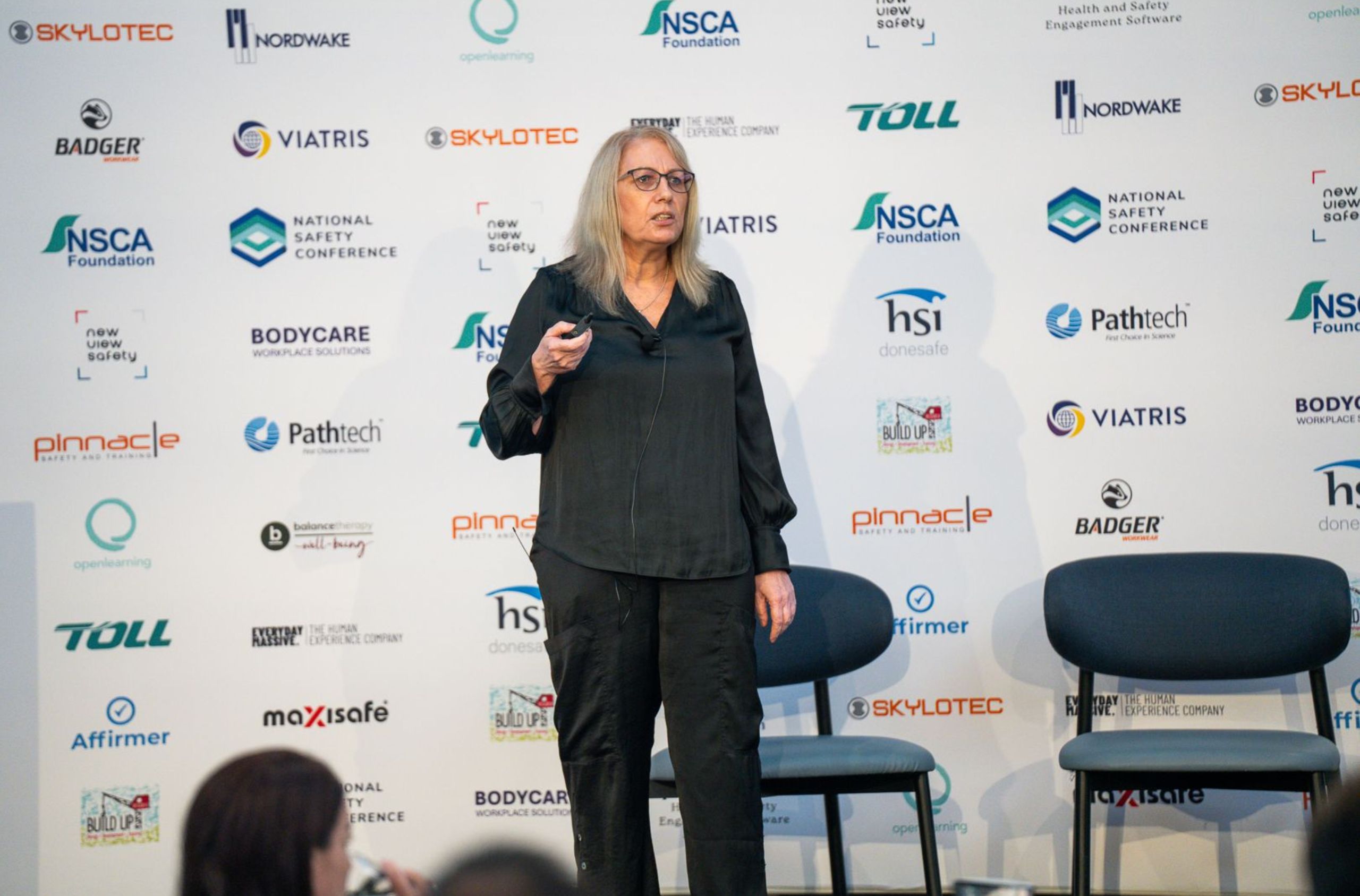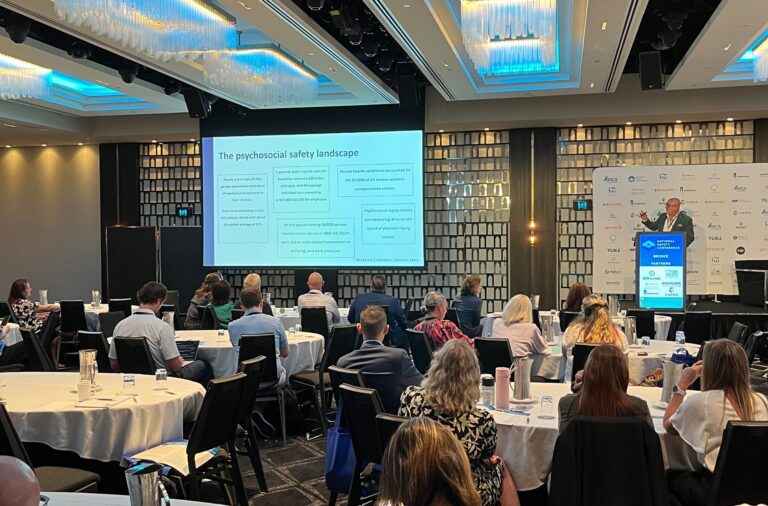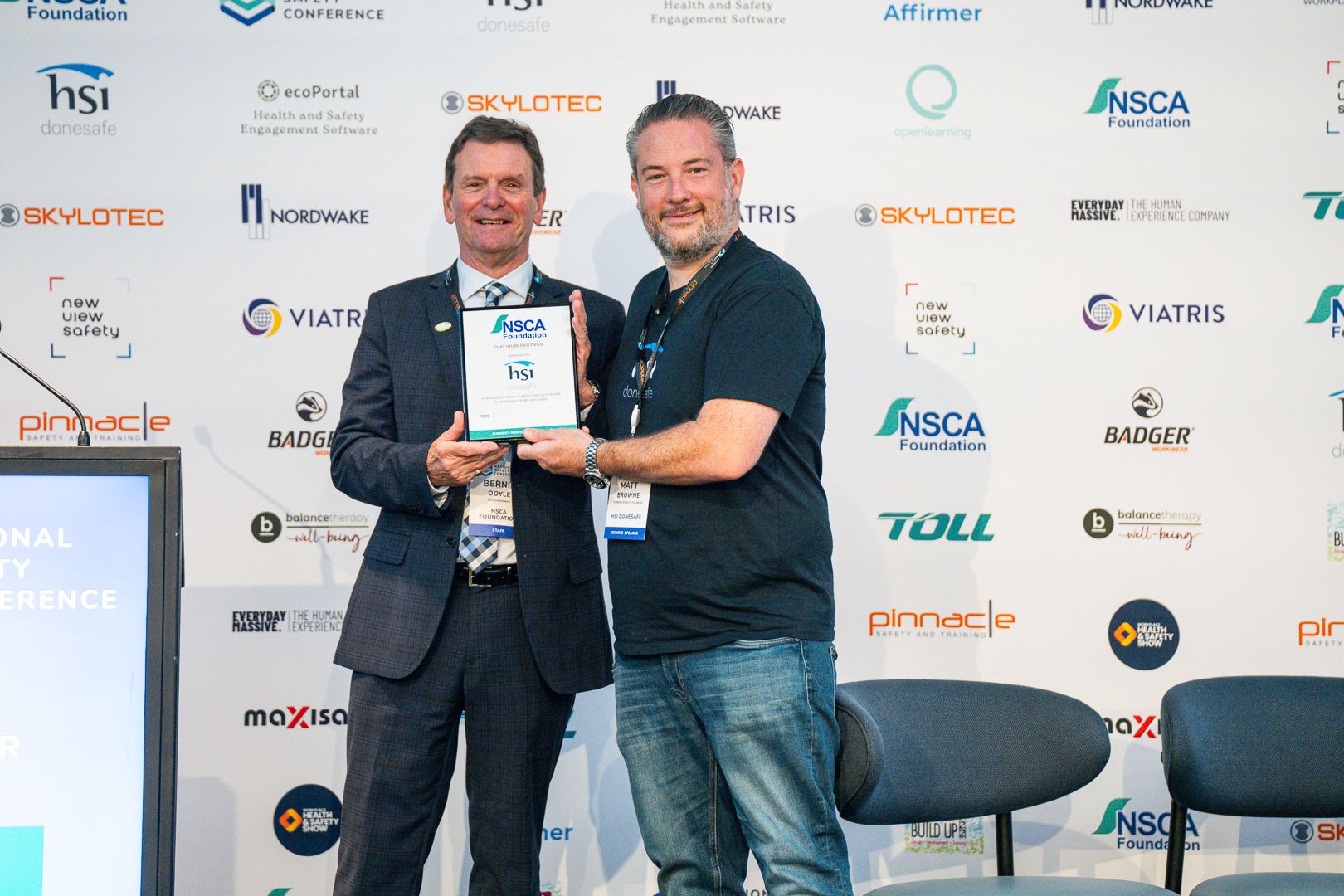
Insights from Liz Kearins, Director, Engagiosity
When it comes to safety, the real issue isn’t always a lack of executive involvement. The better question—according to Liz Kearins—is this: are we helping leaders take the wheel, or making it harder without even realizing it?
Speaking at the NSCA National Safety Conference, Liz—Director at Engagiosity and former GM of Safety at Seqwater—called on safety professionals to rethink their role. Less “Captain Safety,” more coach. Less driving the agenda, more navigating it. Because when leaders lead safety, safety gets done.
The Yellow Car Analogy
Liz kicked off with a story that hit home:
“If safety was a car—likely yellow or orange—who’s driving it in your organisation? Who’s setting the direction? Who’s navigating? Who’s policing roadworthiness?”
Too often, she said, it’s the safety team doing it all. The driving. The steering. The maintenance. But does that really move the needle?
“We had posters everywhere. We had warnings on hot water taps—because the water was hot. But our numbers didn’t change,” she said of her earlier experience in utilities. “We were drowning in policy and tape. Safety was everywhere—but not in leadership.”
The message? Safety professionals shouldn’t be the only ones steering. Their job is to guide, support, and elevate. Not hog the wheel.
Why Leaders Aren’t Leading Safety
It’s easy to blame disengaged leaders. But Liz pushed for a closer look.
Why do execs sometimes step back from safety? She listed a few familiar reasons:
- Competing priorities
- Seeing safety as admin-heavy
- Frustration with time-wasting training
- A false sense of “we’re doing fine”
- Safety metrics dropping off the radar
But instead of pointing fingers, she challenged the room: maybe it’s not them. Maybe we’ve made it too hard to lead.
From Expert to Enabler
The safety role often becomes “the fixer.” Something goes wrong? Cue the superhero entrance—with policies, forms, and legal backup in hand.
But that expert persona can backfire. It sidelines leaders instead of empowering them.
“There’s a way to move from being very compliance driven… to being very commitment driven,” Liz said.
“From being safety leading safety, to handing the keys over and letting leaders lead safety—with us in the navigator’s seat.”
So how do you go from expert to enabler? Liz broke it down into three coaching habits that create real change:
1. Listen Like You Mean It
Not performative listening. Not listening while mentally drafting your reply. Real, present, human-to-human listening.
“Listening with presence means seeking to understand. And listening with empathy—putting yourself in the leader’s shoes—is the most trust-building form of communication we have.”
2. Ask Better Questions
Telling someone what to do is easy. Asking the right question takes more skill—and gets better results.
“Put your brilliant advice in your pocket,” Liz said. “When you ask a question, you activate a different part of the brain. People can’t help but try to answer it.”
And forget advice in disguise. “What do you think about maybe doing it this way?” That’s not a question—it’s coaching theatre.
3. Secure Real Accountability
You’re not just there to chat. You’re there to help leaders make clear, specific commitments—and follow through.
Try this:
- Ask what specific action they’ll take.
- Talk about what might get in the way.
- Use a 1–10 scale to test commitment and dig deeper.
- Get them to share their plan with their team (public commitment drives action).
- And yes—follow up.
Liz’s message wasn’t about stepping away from safety.
It was about stepping into a different kind of leadership.
“Get out of the driver’s seat. Become a navigator. Become a coach. You’ll be amazed at the difference it makes.”
Handing over the keys doesn’t mean letting go. It means helping leaders see that safety isn’t a side task—it’s part of how good business gets done. When leaders own safety, the whole system gets stronger.
About Liz
What if a simple change to your leadership approach could motivate people, boost capability, and drive accountability? Engagiosity Director Liz Kearins believes questions are the answer. Drawing on her experience as a communications and engagement professional, coach and former safety executive, Liz helps organisations improve safety performance by partnering on strategy, culture change, and leadership development.
Share:



